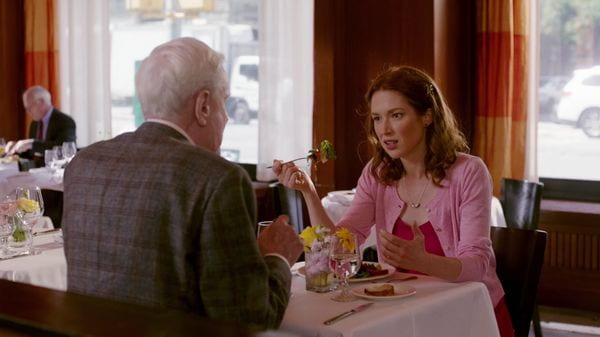Unbreakable Kimmy Schmidt follows the expected and successful sitcom formula, but behind all this lies yet another: the children’s book.

Kimmy’s Colorful World
The show presents itself mostly from the perspective of Kimmy, the main protagonists. Her world is covered in vibrant colors and bright sets. Because the show is mostly from her perspective, the show is able to maintain the optimism and innocence, prevalent characteristics of children’s books, that comes from the perspective of Kimmy. For example, in the first episode, Kimmy is confro

Kimmy’s optimism drives her in her challenges.
nted by several challenges but approaches each innocence and naivety that creates humor reminiscent of children’s books like Amelia Bedelia. The show also tries to veil darker topics with humor. For example, Titus’s repressed sexuality living in the Deep South and Kimmy’s time in trapped in the bunker could both be used as plots to serious, dramatic movies or tv shows. Disguising these topics with humor allow the show to include them without changing the sitcom formula (the happy endings, the “happy-go-lucky” vibe). The same applies to children’s books; darker themes are veiled with euphemisms, metaphors, and humor.

Kimmy’s ten second rule
In addition, Unbreakable Kimmy Schmidt episodes are didactic in nature. The end of every episode leads to a certain moral or lesson. This formula corresponds with the children’s tales like The Tortoise and the Hare or Hansel and Gretel. When I’m watching the episodes, I’m quite frequently surprised by how applicable some of the lessons are. For example, in episode two, Kimmy tells Jacqueline that she can get through anything if she splits the time into ten seconds, and, in episode five, “Kimmy Kisses a Boy!” Kimmy realizes that she needs to confront her problems instead of ignoring them. The viewers are able to learn vicariously through Kimmy’s experiences like how children are able to learnt through the characters of their books.
The creators of Unbreakable Kimmy Schmidt apply to children’s book model to the TV show to provide the childlike optimism and didacticism in an accessible manner to adults.




